How to Avoid Sunburn in Ecuador (UV Index on the Equator)
Sun protection is very important while traveling in Ecuador – especially in the Andes. And it is even more important if you are living in Ecuador. The atmosphere is thinner at higher elevations and allows more harmful UV rays to get through. This puts you at higher risk of burns and other skin problems.
In this guide, you’ll learn about the UV index in Ecuador and how to keep safe under the harsh equatorial sun.
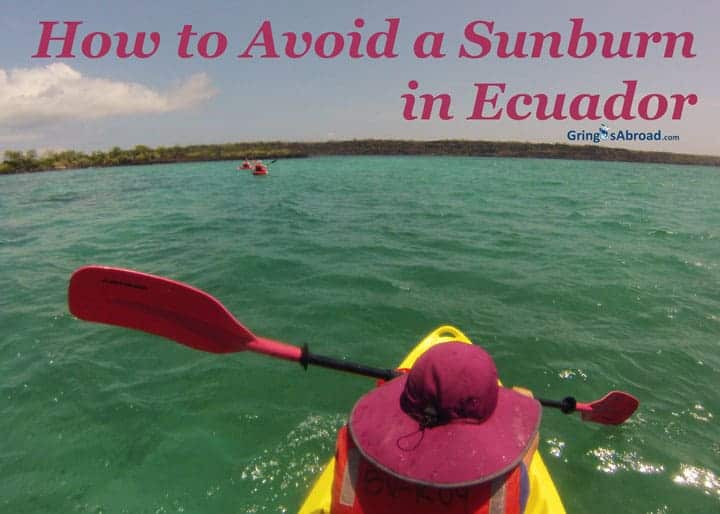
We created this guide to the best sun protection hats – specifically for travelers to Ecuador and the Galapagos Islands.
Skin Damage From the Andean Sun
The weather can be deceptive. Don’t allow the cooler temperatures at higher elevations fool you into thinking the sun is less harmful than it would be on the beach. It’s actually more dangerous.
After living in the Andes for around 4 years I developed a sunspot on my face. It was getting bigger and turning red so I went to a dermatologist to get it checked out. It was not skin cancer, but I must admit the fear crept into my mind.
I needed to have the spot removed. So I had a couple of treatments with liquid nitrogen and it was gone.
The dermatologist talked to me about the importance of sun protection. She told me that I needed to be more careful in the sun and use sunblock every day. I had thought that the sun protection in my makeup was enough, but she said that it was not. This was a bit of a reality check.
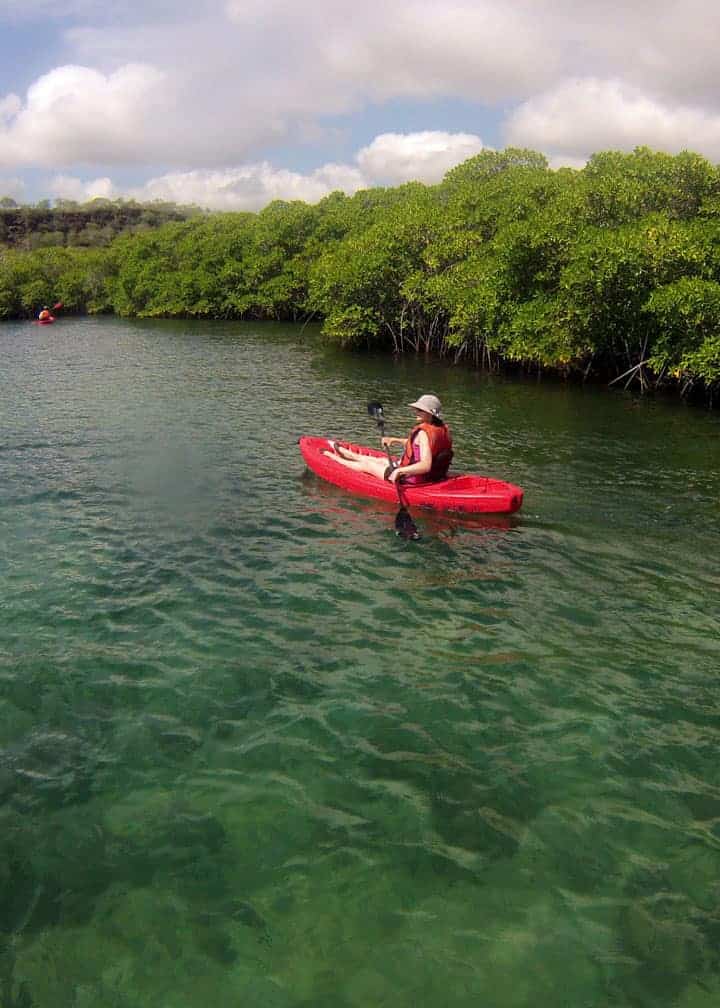
I have sensitive skin and was worried about what all that greasy sunblock would do to my complexion. The dermatologist recommended a sunblock called Umbrella, which has been wonderful.
She recommended the spray, it feels a little lighter than the cream. I spray it onto my hands and rub it around before applying it. That way I avoid blotchy tan marks. Applying makeup over the sunblock has not been a problem.
The dermatologist also told me that the “freckles” and white spots on my arms are signs of sun damage. After the visit, I wished I had thought of visiting a dermatologist when we arrived in Ecuador because I would have been more careful.
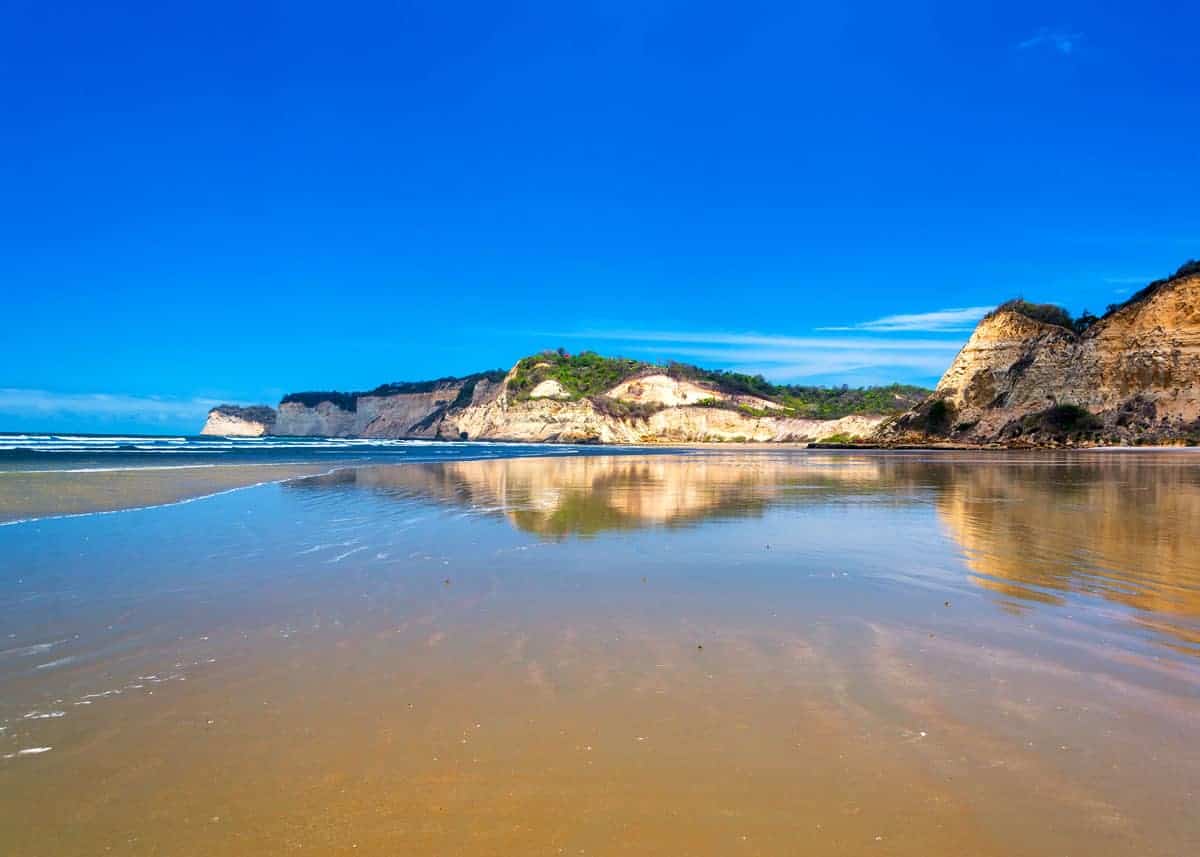
Read more about the beaches in Ecuador
How We Protect From Sun Damage in Ecuador
I am much more careful now, and try to remind Bryan and Drew to be as well. Whenever I spend the day in the sun I wear sunblock, sunglasses and a wide-brimmed sun hat.
I also carry an umbrella for those really sunny days (my favorite is the London Fog umbrella – in red). Here are some other options.
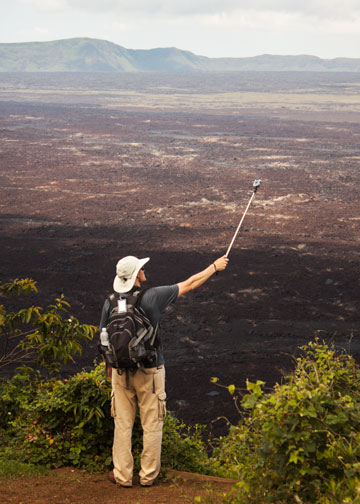
A sun hat is a really important part of your sun protection gear. Make sure you get one you really like, otherwise you will not want to wear it. I love mine, it’s lightweight, has a wide brim, and doesn’t lose its shape when I fold it up, so it travels really well. It’s also versatile, it looks fine for hiking and for something a little more dressy.
Our favorite hats are made by Outdoor Research. Bryan uses the Sombriolet sun hat and Drew has the Oasis sun hat.
Sun protection is especially important from 10 a.m to 4 p.m when the sun is at it’s strongest. The sun is also dangerous on cloudy days, so don’t skip the sun block just because of heavy cloud cover.
It’s important to talk to your doctor and check the warnings on any medication or supplements you may be taking because they could make you more sensitive to the sun. Some kinds of diuretics, antidepressants, birth control pills, and antihistamines are like that. There may be may more medications that could cause problems, so make sure to check with your doctor or pharmacist.
Long-sleeved shirts and long pants will provide more protection than shorts and short-sleeved t-shirts. Loose-fitting, dark-colored clothing is also said to provide more protection from the sun than light-colored, tight-fitting clothing would. Many adventure apparel companies produce shirts and pants with UPF 50+ sun protection.
Don’t forget about your hands! I usually apply sunblock at home, by the time I head out my hands are no longer protected because I’ve washed it all off. I like to keep sunblock in my bag so I can make sure my hands are protected as well.
If you will be spending time in high elevation areas don’t forget the need to be extra careful about sun protection.
Bryan wanted to share his experience with sun protection and the strength of Ecuador’s sun.
If you’re like me, you probably don’t like hats very much. Before we moved to Ecuador, the only hat I wore was a ball hat.
The summer we arrived (2009), I met a Canadian who had spent the majority of his life in Ecuador. He grew up there as a kid, and after some years abroad, he returned. For most of his life, he lived on the coast and wore thin linen shirts. He was fair-skinned and he warned me to dress for the sun, because it is different in Ecuador. He had skin cancer, and the day I met him his face was marked from the removal of numerous spots. He said his back was even worse.
Until that conversation, I had been pretty careless about sun protection.
6 Sun Safety Tips: How Not to Get Cooked in the Equatorial Sun
1. Slip. Slop. Slap.
- Slip on a shirt.
- Slop on some sunscreen.
- Slap on a hat.
It’s as simple as that. Every time you are heading out for an adventure during your trip, do your slip, slop, slap before you even leave.
2. Apply Before, During, and Regularly
Apply a high SPF sunscreen half an hour before you go out, especially if you are planning on swimming.
It is more effective when it has had time to soak in and really adhere to your skin. If you swim straight after application then a lot is lost immediately as it washes off in the first ten minutes leaving you and your loved ones unprotected.
Re-apply every couple of hours, don’t wait 4-6 hours as some sunscreens boast they are good for.
Sweat, swimming or rain, in fact any form of liquid will reduce the longevity of your sunscreen and if you are under that hot equatorial sun, then there isn’t a person alive that won’t be sweating so be sure to reapply sooner rather than later, especially during the middle of the day.
3. Slather it on EVERYWHERE
Hands up who’s come back from a holiday with a sandal or flip flop tan? Yes, we’ve all done it so don’t be obvious and just cover your arms, back and legs.
Slop it on every bit of exposed skin. The overlooked nooks and crannies like:
- the tops of your feet
- your ears
- back of your neck
- lips
- behind your knees and
- if snorkeling – at the top of your leg, behind where your leg meets your bum. Don’t laugh, a lot of people get severely sunburnt there when they’re face down, bum up looking at the pretty fish while snorkeling and can’t sit down or walk properly for a couple of days. Okay, it is kind of funny, but not if it’s you so don’t forget.
These are some of the most obvious spots but somehow always seem to get forgotten. Plus, if you’ve ever been sunburnt behind your knees, you’ll never line up for it again… ouch!
4. Be Cool
Be the one wearing sunglasses in a pool, it will protect your eyes from direct UV exposure and also a secondary dose of UV exposure from the water reflecting and bouncing up the rays right into your face even if you are wearing a hat.
You can do this in the ocean too, just make sure you have a sunglasses lanyard to keep them on your head and not washed away.
5. Hats Dry Quick … wear them!
Get into the habit of grabbing your hat as you go outside and wear it! It sounds simple right? Wear them on tours, wear them swimming, wear them sightseeing hopping on and off buses, wear them everywhere! If the sun can reach you, stick a hat on your head… there’s no other way to say it.
6. Wear long sleeves.
There’s a reason that truckers and taxi drivers wear those fake tattoo sleeves. It protects their arms from sun damage. Get some breathable, wicking shirts with a UPF rating and you’ll protect the skin on your arms – especially the window side.
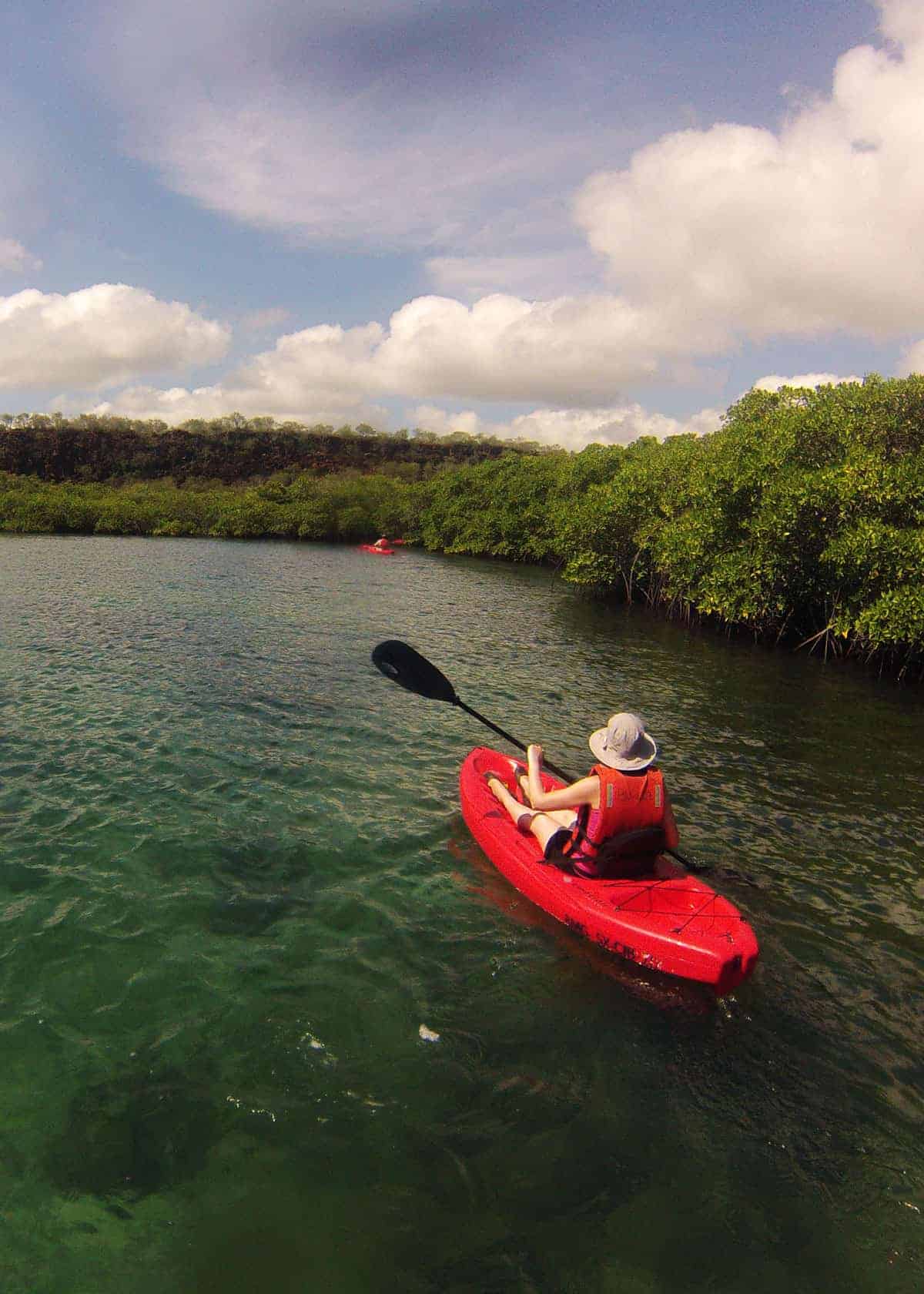
What’s the UV Index in Ecuador?
Shielding your body’s largest organ, your skin, from the equatorial sun is a high priority in more ways than one. Most of the year Ecuador and the Galapagos has a high UV (Ultra Violet radiation) index of between 10- 12. This means that light skinned people will burn in about 15 minutes.
The midday sun in Cuenca is harsh – you can almost feel your skin burn. That’s why so many of the locals cover their heads with whatever they have in their hands: mothers with blankets, business people with folders, and construction workers with old t-shirts. If you’re traveling in Ecuador, you need to be concerned about the sun.
UV Index in Ecuador
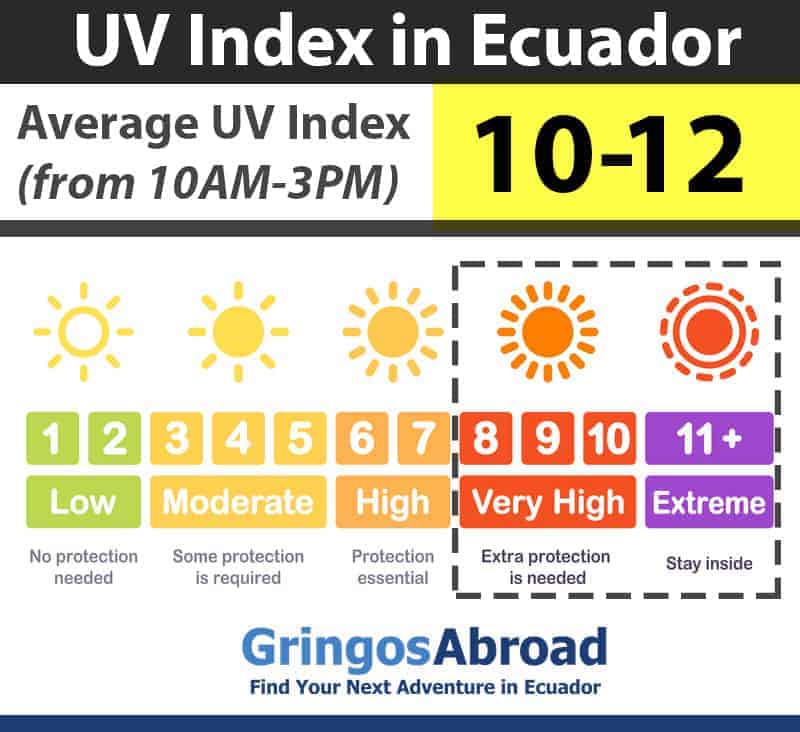
UV Index Scale
- 0-2: Low (Green) Wear sunglasses. Safely enjoy being outside. Low danger for the average person.
- 3-5: Moderate (Yellow) Stay in shade near midday. Wear protective clothing, wide-brimmed hat, and UV-blocking sunglasses. Apply SPF 30+ sunscreen every 2 hours – even on cloudy days and after swimming or sweating.
- 6-7: High (Orange) Reduce time in sun between 10AM and 4PM. Same protective measures (clothes, hat, sunglasses, sunblock) as above.
- 8-10: Very High (Red) Minimize time in sun between 10AM and 4PM. Same protective measures (clothes, hat, sunglasses, sunblock) as above. Watch out for bright surfaces, like sand, water and snow, which reflect UV and increase exposure.
- 11+: Extreme (Fuschia) Extreme risk of harm from unprotected sun exposure. Skin and eyes can burn in minutes. Try to avoid sun exposure between 10AM and 4PM.
The Shadow Rule: To know how much UV exposure you’re getting is to check your shadow.
- Taller Shadow = Lower UV: If your shadow is taller than you are (early morning / late afternoon), UV exposure is likely to be lower.
- Shorter Shadow = Higher UV: If your shadow is shorter than you are (around midday), you are being exposed to higher levels of UV radiation. Seek shade and protect your skin and eyes.
Source: UV Index scale detail and shadow rule epa.gov and who.int
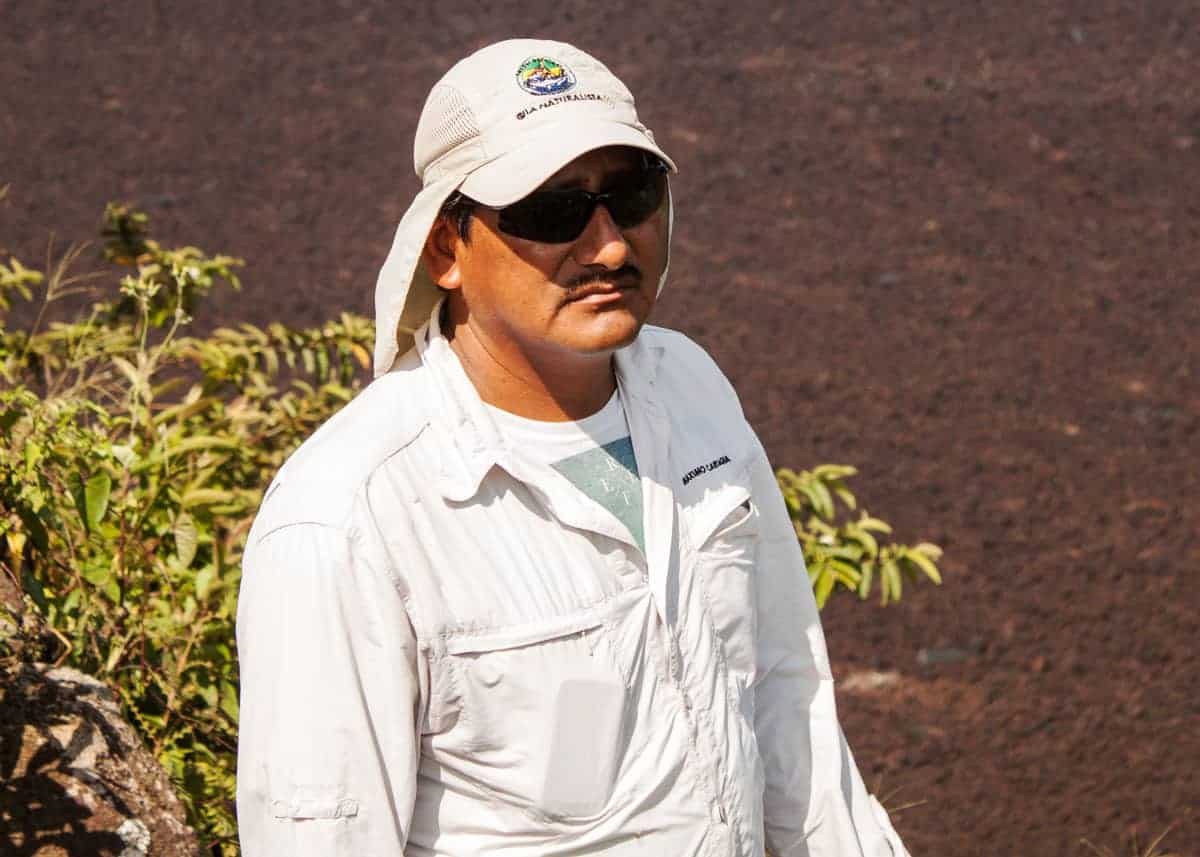
Need help choosing a great sun hat? This guide will help.
Your Turn
Please share your favorite sun protection gear by commenting on this post.



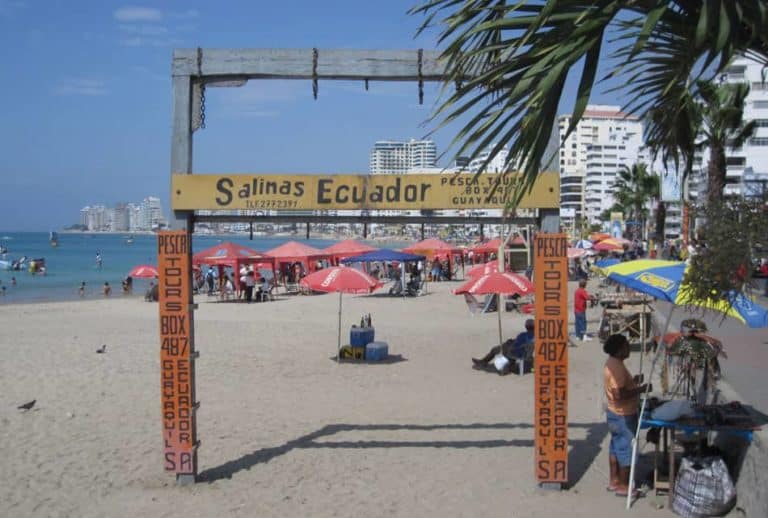

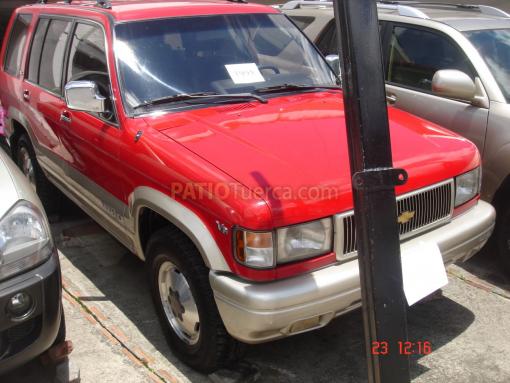

Living on the coast, I have found that I can burn my lips very easily!! Sun blisters are not pretty! Protect your lips with a good sunblock.
Thanks for the great advice and detailed information. And thanks for reposting these articles from the past on facebook. It’s a great way for someone new like myself to get the benefit of all your past writing. We’ve got our flights to Cuenca for March 31.
Bob
Excellent info! I use a hat that I’ve had for years from San Diego Hat Company. It is very durable (machine-washable), and I wear it almost every day that I leave the house. I also carry a “paraagua/sombrella/para perros” with me — that’s an umbrella to your English speakers. 🙂
I brought my own sunscreen with me when we moved to the Sierra, but I will definitely check out the “Umbrella” brand, too, so see if I can use it, since I have such sensitive skin.
Please remember that we do need some sun on our unprotected, uncovered skin so that we can make the vitamin D that we need for our immune systems to fight off all the “gripe” (cold/flus) that are here, but that equals much less time here than it does up north. This was well illustrated by the experience above of getting badly burned in 10 minutes. Enjoy the sun, but take care in order to avoid glaucoma and skin cancer (very common here in Ecuador) with your “gafas” (sunglasses), protective clothing and hats, and sunscreen (remember to keep reapplying every couple of hours or so). Most sun-damage is NOT visible to the human eye. 🙂
Great info! I’ve always been careful in the sun. Where do you get the Umbrella sunscreen? Is that a product available in Ecuador?
Yes, it is sold at the pharmacies in Ecuador. We usually buy it at Farmasol – a government run pharmacy – it is almost always in stock and costs a little less. I don’t know if it exists outside of South America. It is made in Colombia.
May i ask how much you pay for it, approximately?
Usually good suncream (without alcohol, which is the case with the umbrella, yeah) is difficult to find (here in germany) and pricey. Since it has to be applied very generously (at least half a teaspoon for the face only) it won’t last very long. Thank you for a reply!
Good post. I just wish that it had been up and I had seen it before this past February. I spent a month in the Andes and usually took adequate precautions. I got burned “good” twice. The first full day in Cuenca riding up top on the bus tour around town, and the next to last day around Cotacachi. It did make for an uncomfortable return trip to the States.
Thanks for sharing,
Rich
Until we moved to Ecuador, I never “felt” my skin burning before. It can happen very fast.
I detest hats, so I used to get sunburn on the top of my head even though I do have normal hair on my head. Up on the Tungurahua I got burned all over my body after being exactly 10 minutes shirtless. The solution to not wearing a hat for me has been putting sunblock right into my hair. That has worked fine.
I agree. I hate hats too. I never wore anything besides a ball hat before coming to Ecuador but I now wear a big wide-brimmed hat when we are hiking. Even with sunblock I was still getting burnt on my neck.
I haven’t tried sunblock on my scalp yet…
Thank you for the sun information. I also recently heard that it is important that sunglasses are not all the same, that the lens darkness or mirror lenses make no difference. You must buy glasses that indicate on the tag that they are UV (both A and B ultraviolet protective lenses) to insure that your eyes are correctly protected.
Can you please give us a referral to your dermatologist in Cuenca